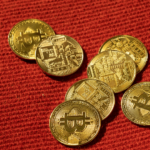With over $2 billion spent by consumers in Q4 2020, the nascent nonfungible token (NFT) market has already achieved a number of eye-catching milestones for 2021. It’s often overlooked that new investors are becoming increasingly interested in the market, even as record-breaking sales dominate the headlines. As of Q1, there were 73,000 buyers and 33,000 sellers of NFT transactions via Non Fungible, which tracks NFT transactions. Despite looking impressive on the surface, these figures are in reality tiny in comparison to the global art market, which stood at $64.7 billion in 2018. Eighty-four percent of the global market was made up of the United States, China, and the United Kingdom.

In an increasingly online and globalized world, where the demand for art assets in new markets will only grow, the traditional infrastructure of the art market, dominated by dealerships and auction houses, already seems outdated. As a result of the COVID-19 pandemic, people will probably look back and see that it disrupted art market infrastructure. NFT does provide a glimpse into how smart-contract technology can be used to remove the middlemen and third parties that would otherwise take a cut. In its current form, the current system is not a viable alternative to the current methods of verification, distribution, auction, and certification of ownership, given its many flaws and potential for user error.
NFT data today cannot be used to establish with any degree of certainty who the actual creator was. A growing number of NFT forgeries and fraudulent cases arise where scammers fabricate NFTs that appear to be works by specific artists. NFT forgeries are a rapidly growing issue, according to a quick Google search on that topic. The scammers sometimes take images of real artworks from artists, convert them into NFTs and then sell them as if they are the artists themselves.

Additionally, when a NFT contains significant associated data or content, such as an image, that data is not stored on the blockchain. NFTs instead include links to the data, most frequently through hyperlinks on the internet. There wouldn’t be a way to determine or prove, from blockchain data, what picture was purchased with that NFT if the data (e.g., image) at the end of that hyperlink changed or disappeared.
Consequently, NFT data cannot be protected from eroding. Unbelievable, but true. Therefore, the NFT’s value can be destroyed by altering or deleting the NFT’s image or data. User errors can also lead to millions of dollars going to the wrong address or being stolen forever, such as people miscopying long complicated addresses or succumbing to man-in-the-middle attacks.
Authenticity is validated
Physical art is signed by the artist so that its authenticity can be validated, and the art piece’s owner ensures its permanence by storing it securely. Taking a decentralized, self-governed approach is the only way to enable NFTs to succeed over the long-term.
COVID-19 is spreading rapidly through the art world, and its long-term impact is unknown. The past may show that it created much-needed competition and an end to the high-end cartel of auction houses and dealers of varying reputations. In spite of the fact that there is a clearly defined demand for NFTs, smart contracts have shown how to cut out these middlemen. However, operational risks and the possibility for fraud make the current exchange model unviable for scaling.

The continuation of the use of NFTs across the blockchain ecosystem depends upon forgery prevention and permanence protection, ensuring a fairer, more transparent, and more equitable system for art buyers and sellers. As an industry, we should begin building the future art ecosystem.
*Investment advice and recommendations are not contained in this article. Every investment and trading decision is fraught with risk, and every decision should be based on research.




